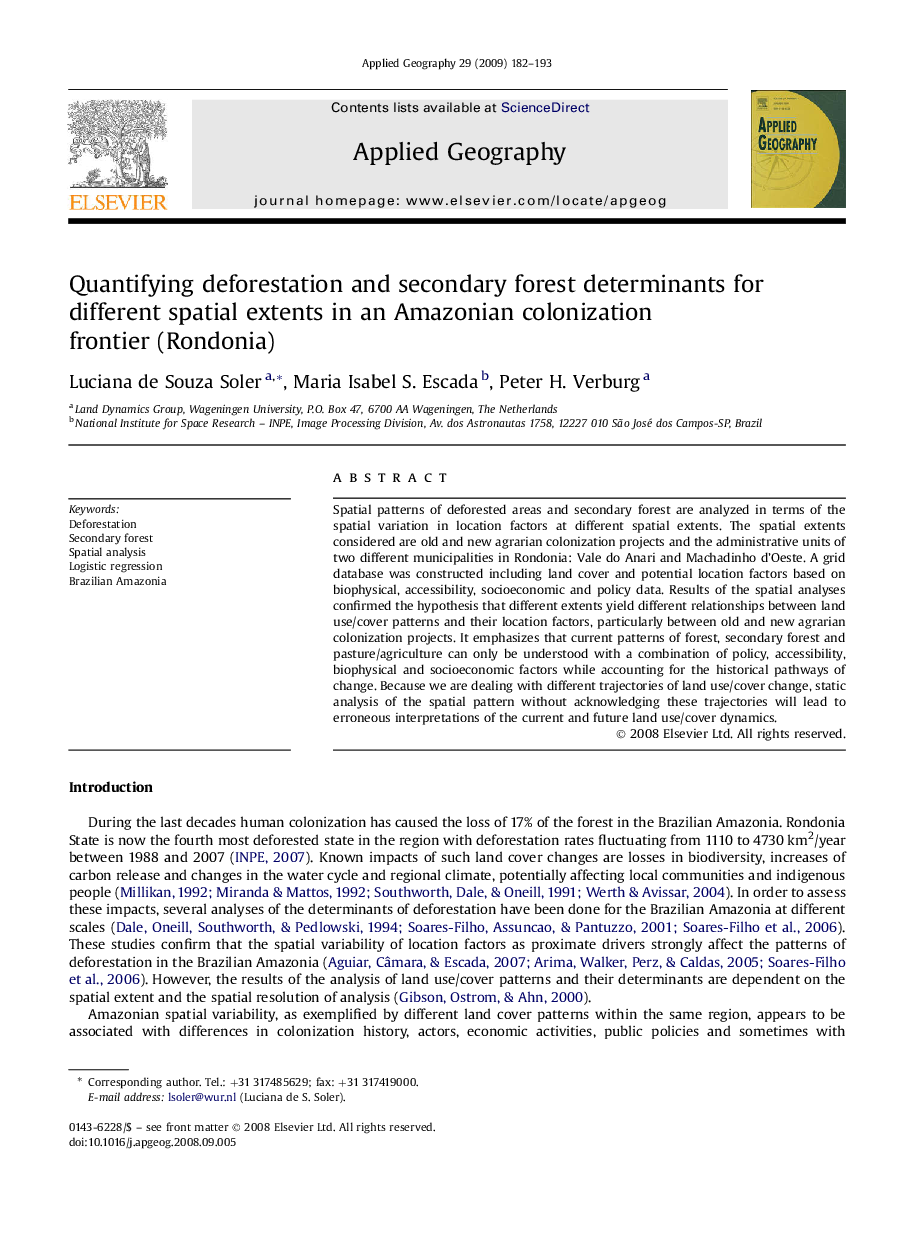| Article ID | Journal | Published Year | Pages | File Type |
|---|---|---|---|---|
| 83733 | Applied Geography | 2009 | 12 Pages |
Spatial patterns of deforested areas and secondary forest are analyzed in terms of the spatial variation in location factors at different spatial extents. The spatial extents considered are old and new agrarian colonization projects and the administrative units of two different municipalities in Rondonia: Vale do Anari and Machadinho d'Oeste. A grid database was constructed including land cover and potential location factors based on biophysical, accessibility, socioeconomic and policy data. Results of the spatial analyses confirmed the hypothesis that different extents yield different relationships between land use/cover patterns and their location factors, particularly between old and new agrarian colonization projects. It emphasizes that current patterns of forest, secondary forest and pasture/agriculture can only be understood with a combination of policy, accessibility, biophysical and socioeconomic factors while accounting for the historical pathways of change. Because we are dealing with different trajectories of land use/cover change, static analysis of the spatial pattern without acknowledging these trajectories will lead to erroneous interpretations of the current and future land use/cover dynamics.
